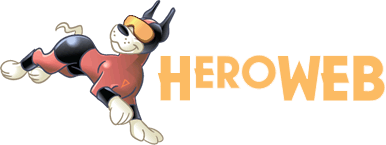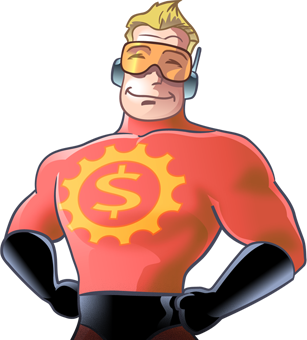Creating Effective Landing Pages

Creating Effective Landing Pages
By Vanessa Salvia, 12/21/08
There are times when you want a visitor to your website to be taken directly to your home page, and other times when they should be taken to a specialized page that offers exactly what they were searching for. These targeted pages are called landing pages, and it's worth investing the time to use them effectively.
What is a landing page?
Visitors clicking on a link from some outside source, typically an online ad from a Pay Per Click (PPC) campaign, should see should see a landing page that you have developed specifically to work in harmony with the search terms your online ad campaign is targeting. The home page must appeal to anyone who visits your site, so there's no way you could include all of your relevant search terms there. You should have several landing pages, and each should be narrowly focused and optimized with a group of keywords based on what the visitor already told you they're interested in, along with a clear call to action.
By Vanessa Salvia, 12/21/08
There are times when you want a visitor to your website to be taken directly to your home page, and other times when they should be taken to a specialized page that offers exactly what they were searching for. These targeted pages are called landing pages, and it's worth investing the time to use them effectively.
What is a landing page?
Visitors clicking on a link from some outside source, typically an online ad from a Pay Per Click (PPC) campaign, should see should see a landing page that you have developed specifically to work in harmony with the search terms your online ad campaign is targeting. The home page must appeal to anyone who visits your site, so there's no way you could include all of your relevant search terms there. You should have several landing pages, and each should be narrowly focused and optimized with a group of keywords based on what the visitor already told you they're interested in, along with a clear call to action.

Not a trick
In days past, a commonly used tactic was to fill a webpage with content specifically designed to trick search engines into ranking the page highly, and send users to another page where the real content was and the sale was made. These were called doorway pages, gateway pages, or even landing pages. While these are still used, they are obsolete and are considered spam. A good landing page is intended to quickly provide users with what they want, not trick the search engines.
The sale process is slightly different when a visitor surfs to the home page versus a landing page. On the home page, a visitor selects from a menu, searches for the product or service they're looking for, then navigates to the product page, then decides to purchase. When a visitor is taken directly to a landing page, they are circumventing the home page. For an e-commerce site, the landing page is typically an optimized product page, which is ready to make the sale at that point.
Let's say you sell patio furniture. One of your PPC terms might be "wicker chairs." If a person searches for "wicker chairs" your ad should pop up, and when they click on that ad, it should take them directly to an optimized page offering wicker patio furniture. Taking them to the home page where they have to navigate through all of your wood, aluminum, plastic, and iron furniture options would be a mistake. They've already told you they want wicker, so take them directly to it! If they choose to browse your whole collection of patio furniture, they can.
Can't tweak the product pages that much?
If for some reason you don't want to or don't have enough control over your site to tweak your product pages to the extent that would make a good landing page, one option is to create some information pages that link to the product purchasing page. These pages could include testimonials from happy customers, product information and comparisons, some images, and links to the targeted product page. This isn't the best approach, but can be a workable solution.
Use with email marketing campaigns, too
A landing page isn't just for Internet searches-use them in conjunction with your email marketing campaign, too. Your email blast or newsletter could be enhanced by linking directly to an optimized interior landing page rather than your home page, especially one that repeats the email's call to action.
Optimizing a landing page
There are different opinions about structuring a landing page. There's agreement that a landing page should be targeted, but some people will say it should contain information only about the main offer and nothing else, while others will say that you should provide easy access to the rest of your site. My feeling is that your PPC campaign will be driving highly targeted traffic to your site, so your landing page message should be narrowly focused on the primary offer, but, should also allow for easy access to the home page. After all, they may be searching for a wicker chair but they might want to see your umbrellas, too. Experimenting and analyzing your successes should tell you the right way to go for your business.
Page Content
The goal of the landing page is to either have them purchase a product or take some sort of action, like downloading a free trial or signing up for a newsletter. Give the site visitor the tools and information they need to convert, quickly.
Call to Action
A Call to Action should encourage your visitors to follow through with their intent, to "Buy Now" or "Sign Up Now." Link these messages to your shopping cart or subscription form for the most direct route through the process.
Place your Call to Action at the top, where it is easily seen and visitors don't have to scroll to reach it. Incentives such as a discount or bonus can be a powerful tool to recover lost sales, prevent abandonment, and increase sales volume. If you have such an incentive, display it clearly, also at the top. Some incentives will work better than others, so if one doesn't provide the results you are after, retool and retry.
Amount of text to include on the page
Your landing page should have a focused message, so keep your content short. A landing page should be a summary of the features of the product or service, so use bullet points or short sentences to be concise. If it's a product page, of course include photos and technical specs. Write your copy with the intended audience in mind. Include a phone number, email address, or contact form for those visitors who want to receive more information.
There is no consensus on how long a page should be. It will vary greatly depending on the type of product or offer and what needs to be said about it. But generally speaking, use only as many words as you need to convey the core message without being high pressure.
Hone your message in your own mind before you begin putting it on the page. Ask yourself the basic questions: What is the product or service? What's appealing about it? Who are you targeting with the offer? What do they need to do to get it? Every aspect of your landing page should drive the prospect to the intended outcome, with nothing distracting or superfluous.
Consider your audiences
The intended audience for a landing page isn't just the people. There's the search engines to consider, as well. Since Google instituted its Quality Score algorithm, landing pages designed for visitors coming from Google AdWords ads must reflect a high Quality Score, including such metrics as page loading time, how many links are on the page, and how those links are used, among others, or the cost-per-click can reach multiple dollars.
Your keywords should be sprinkled throughout the title, headings, and text of the landing page, so that there's no doubt in the search engine's "mind" that it knows that your page is useful and relevant. But keep the narrow focus by using a small group of keywords. If you need more keywords, design another landing page.
Make sure that all of the content on each of your landing pages is original and not duplicate content you pasted from somewhere else on your site.
Measure success and experiment
Testing is the key to online success, and landing pages are no different. To find what works for your industry, be prepared to tweak and refine keyword groups, incentives, Calls to Action, the copy, the images, and essentially everything that relates to the core offer. Change one or two things at a time until you get the results you desire.
A/B testing and multivariate testing are two ways that help you easily track what you have changed. A/B testing is normally designed to test the effectiveness of two different sets of content, while multivariate testing is more complex and can test the effectiveness of several content variations.
If you do redesign your landing pages based on the results of your testing, keep in mind what the prospects will be hoping for, not what you would want to see in a page. Remember your target audience and refine your message for them, not for yourself or any other staff member. Give the customer what they want, in an easily navigable format, with no hype or superfluous distractions, and they will reward you with loyalty.

